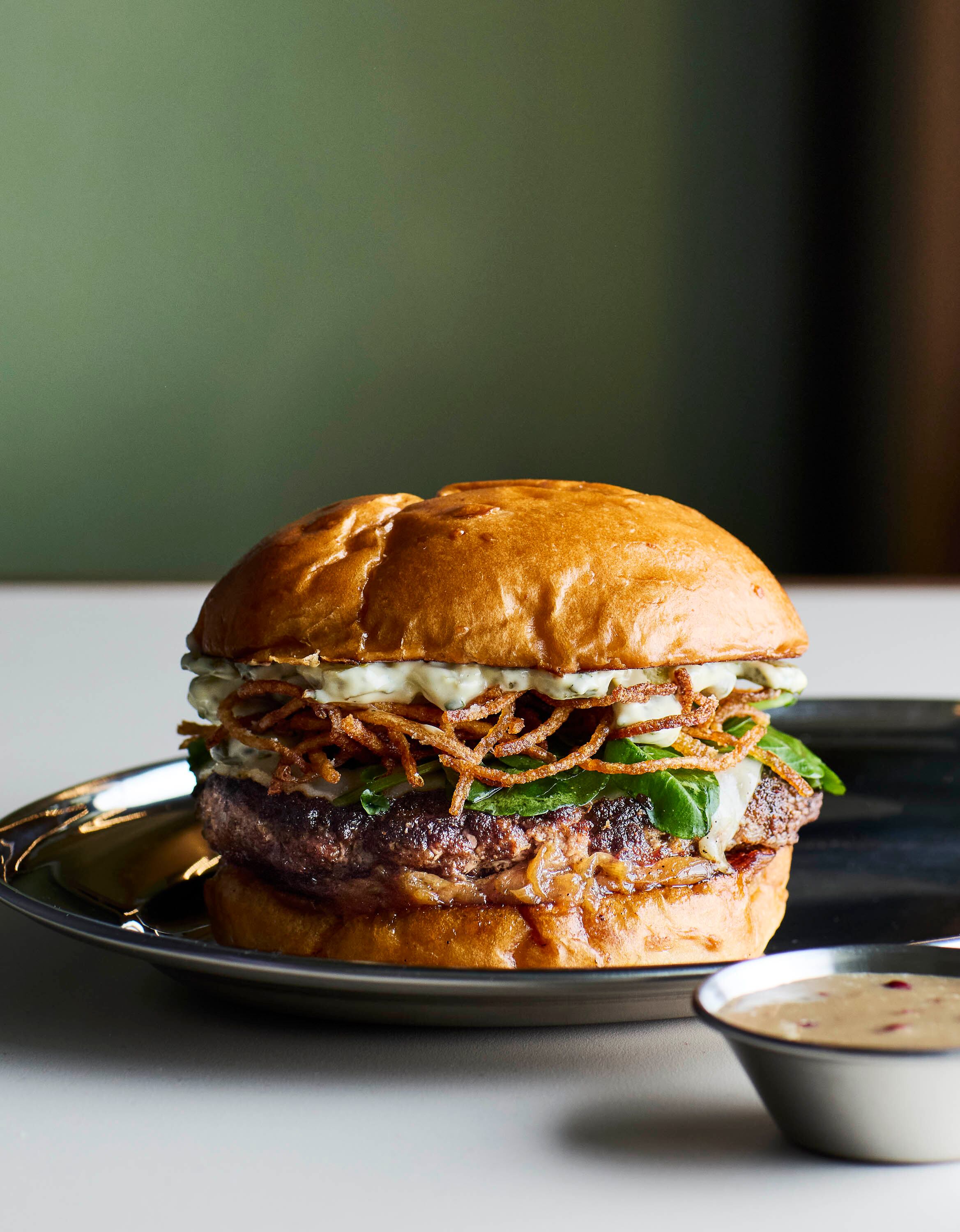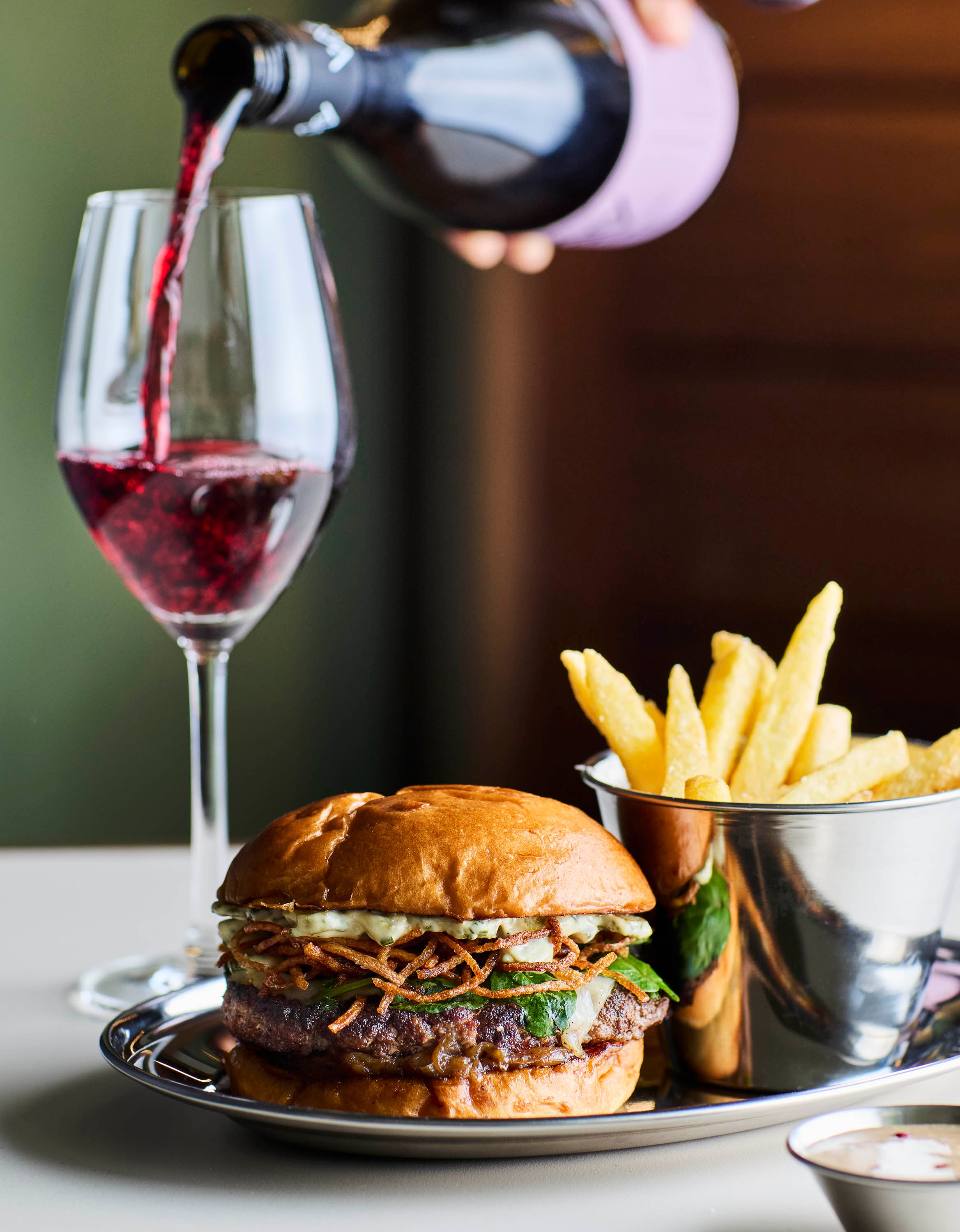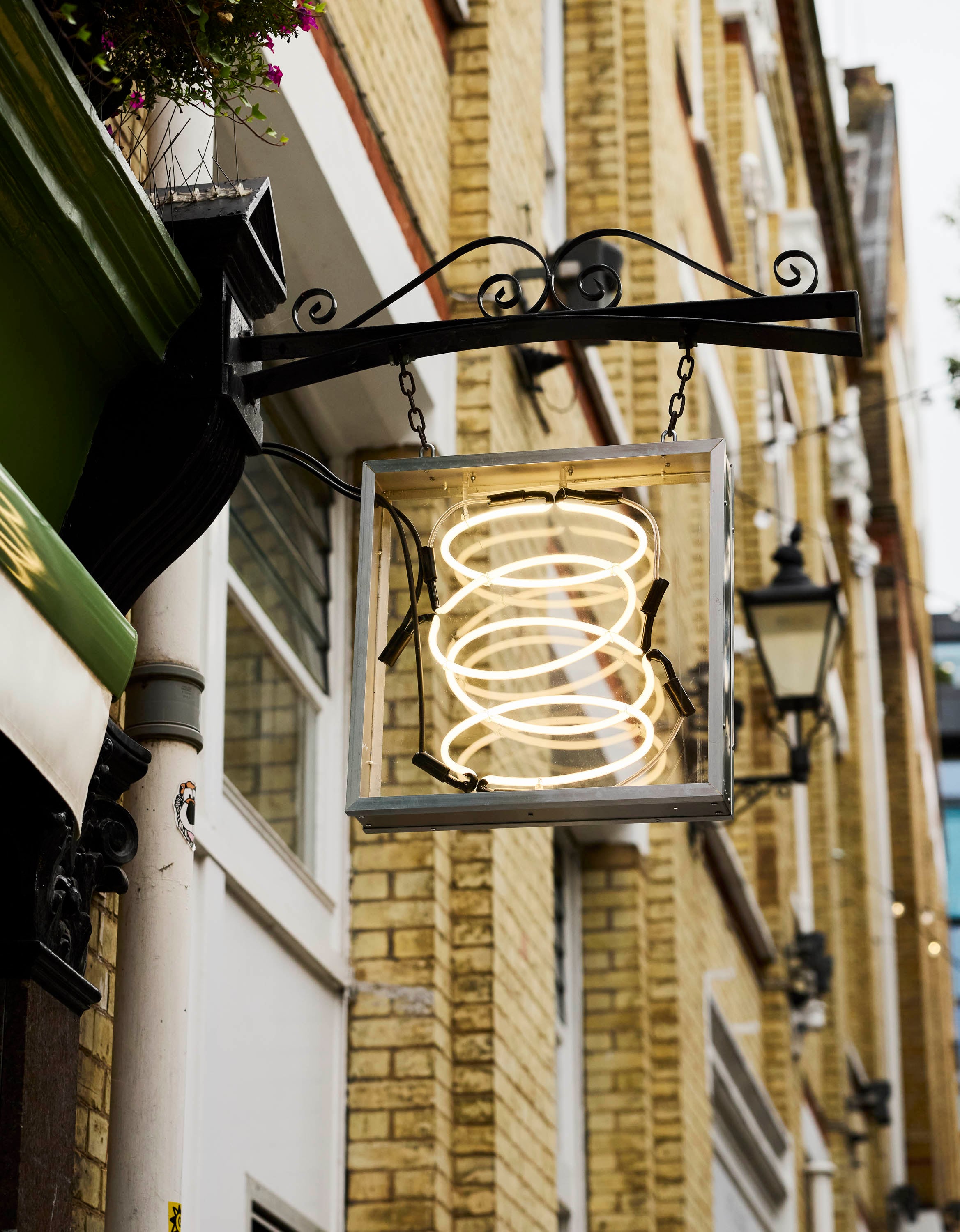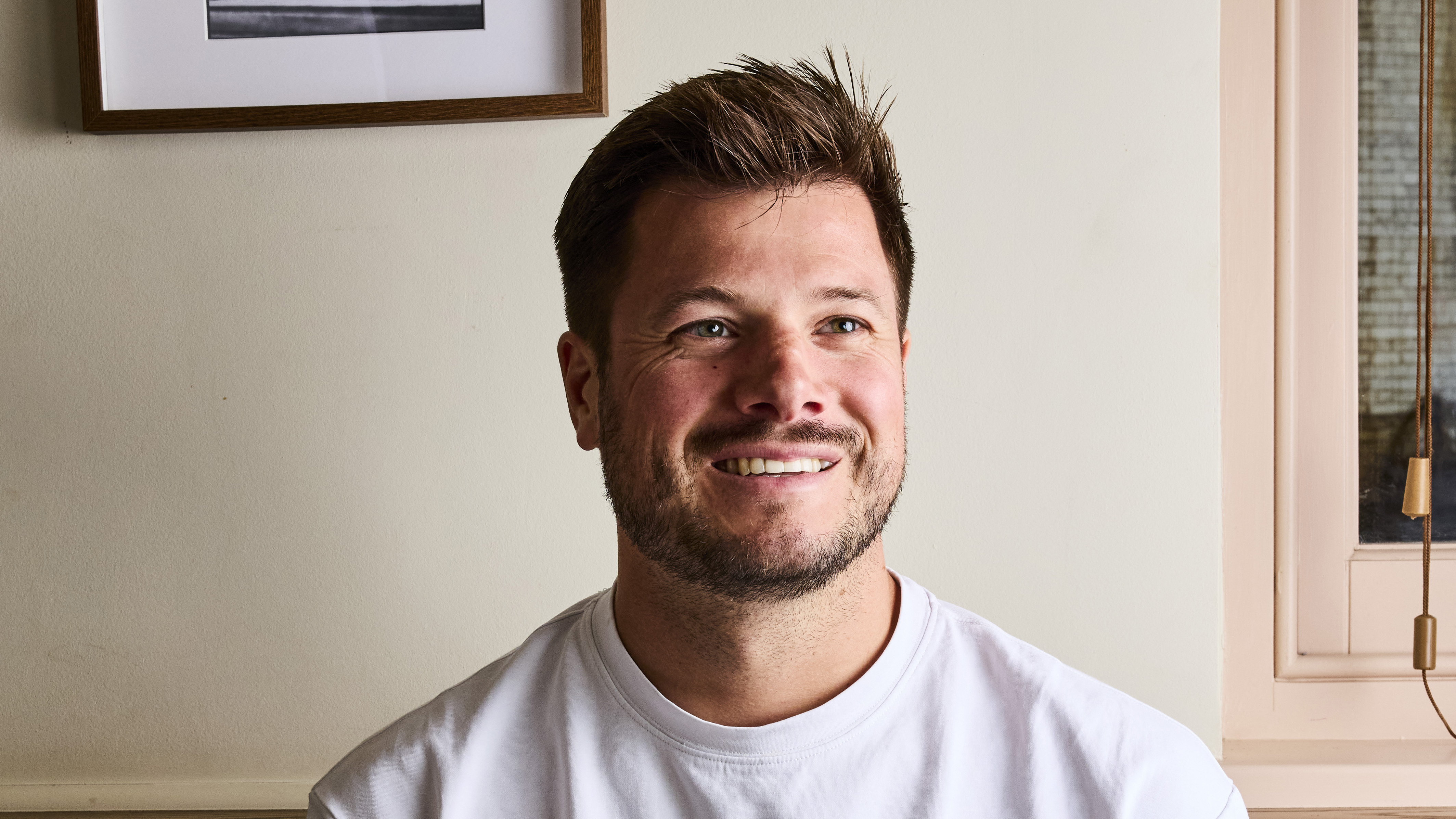As one might expect, the contrast between running a multi Michelin-starred restaurant in Ireland and a burger business in London is vast. But as Jordan Bailey, the Cornwall-born chef who previously ran the two Michelin-starred Aimsir in County Kildare and is now behind elevated burger brand Heard, which has just opened its second site in the capital in Soho, points out, in many ways it’s not all so different.
“They’re as hard as one another to make work,” he says with a frank smile. “Creatively, of course, it’s very different, but the work behind the scenes is exactly the same. The thought process is the same. The amount of time you think about every element is the same.”
Within the fine dining world, Bailey is an undisputed talent. He launched Aimsir in the spring of 2019 having previously cooked for the likes of Simon Hulstone and Sat Bains. He also spent time in Scandinavia and was at the helm of Oslo restaurant Maaemo when it became the first restaurant in Norway to be awarded three Michelin stars in 2016. At Aimsir he set another record, earning two Michelin stars less than five months after opening, making it the fastest restaurant in the history of the Great Britain and Ireland Guide to achieve such an accolade.
Given his pedigree, Bailey’s decision to step away from fine dining to build a business in the fast food space certainly feels like a left-field choice. For Bailey himself, however, it was a natural next step in his career. “I’ve always looked to explore different ways of being creative in different markets. And I just knew I wanted to do something way more casual.
“As a chef I have lots of ideas, and I find it very tiring just to be in one segment of the industry. Other people thrive on it, but I like to have a bit of diversity. It gives me fresh eyes.”
Testing the concept
We’re sat outside on a balmy autumn day at Heard’s Borough restaurant, its first bricks and mortar location, which launched back in February. At the time the restaurant was positioned as a pop-up, but Bailey has since confirmed that it is now permanent. It’s a buzzy spot on Flat Iron Square with a steady lunchtime trade of local office workers and tourists that have wandered beyond the confines of the nearby Borough Market.
Bailey’s journey from Michelin-starred chef to burger slinger began in the pandemic when lockdown led him to open a food truck while Aimsir was forced to close. The truck initially operated during the summer, serving a menu that included kebabs and lobster rolls, before transitioning in the winter to a takeaway offer that centred on gourmet-style smash burgers. Thus, a seed was planted.
“I just loved the buzz of it,” says the chef. “How you can take something so simple and elevate it. The same customers that came to the restaurant were coming for the burgers, and they absolutely loved it. Ever since then I knew I was going to do something like this.”
We’re not looking at hyper trendy areas like Shoreditch and Hackney. I don’t think we’re that sort of brand
Bailey and his wife Majken Bech-Bailey, with whom he ran the restaurant, eventually left Aimsir in April 2023 (the restaurant subsequently closed) and went on to launch a hospitality consultancy and events catering firm, Bech-Bailey, which soon brought them to London. There, the idea for what would become Heard took hold. “I got chatting to a friend who had food trucks. He asked me about my plans, and I mentioned my idea for a burger business. The idea grew from there.”
Heard launched as a fleet of food trucks in 2024, touring the UK events circuit over the spring and summer. They included pitches at everything from major festivals like Wilderness to the Chelsea Flower Show and the Bristol Balloon Fiesta. “That time was mainly to test the burgers and the concept with different types of diners,” explains Bailey. “And what we got from it is that it just resonated with everyone.
“We were really pushing a product-first approach that championed our suppliers, and people across all demographics – foodies, teens, families – really bought into it at every location we travelled to. That gave me the hunger to move it into bricks and mortar.”

Not another smash burger brand
In many ways, the Heard menu now served in Borough and Soho is very similar to that offered by the food trucks, featuring a tight menu of double patty smash burger options. They include the OG Heard burger, which features jalapeño hot honey, Ogleshield, white onion, Heard sauce and pickles.
Bailey describes his kitchen philosophy as ‘rejecting unnecessary complexity or overprocessing in favour of standout ingredients’. The menu also includes the wryly named Boring Burger, a take on the convention double cheeseburger featuring aged cheddar, white onion, Heard sauce and pickles. A bump of caviar can be added on the top to make it The Not So Boring Burger. And the Truffle Shuffle with Italian black truffle mayonnaise, Baron Bigod, balsamic pickled red onions and green leaf.
The burger patties themselves are made with British beef from ex-dairy cows that’s been aged for a minimum of 28 days and sourced from a cooperative of regenerative farms. The fries are made using Koffmann’s potatoes, while the buns come from Seven Seeded, the Hertfordshire-based bakery that also supplies multiple Michelin-starred restaurants in London including Trivet, HUMO and Pavyllon.
The burger itself has changed massively. I wouldn’t even say it’s recognisable from the food truck
Smash burgers, of course, have become increasingly ubiquitous in the UK of late, particularly in London where the last 18 months has seen the rise of viral brands like Supernova; Parisian imports Junk and Dumbo; and, most recently, the Milan-based Chuck’s. Bailey’s decision to focus Heard’s menu around the smash burger was born from this ever-increasing trend, but curiously he doesn’t actually define Heard as a smash burger brand.
“The reason we chose to focus in on smash burgers originally was because they were on trend and on the food trucks they cook incredibly fast. That all tied in nicely, but from the outset it was never intended for Heard to be just serve smash burgers.” To that end, the new Soho restaurant has introduced the group’s first thicker patty burger, which features Gruyère, cornichon and tarragon mayonnaise, shoestring fries, watercress, and a caramelised onion and pink peppercorn dipping sauce.

Heard formation
While the Heard menu has remained relatively consistent, both the product and the concept have gone through numerous evolutions. “The burger itself has changed massively,” says Bailey. “I wouldn’t even say it’s recognisable from the food truck, and I’d say the same between when we launched in Borough and Soho.”
Since the launch of the food trucks last year, Heard has changed its meat supplier twice, with the patty blend being amended several times. “I don’t see that process stopping,” the chef continues. “Nothing is ever perfect. You can always keep evolving. Making a burger can look very simple, but it’s so complex. It’s about the breed of cow, the aging of the meat, what muscles you use, the fat content, the way it’s minced, the size of the patty… and that’s all before you start cooking. “
The concept itself, meanwhile, was originally conceived to be a lot more hands off; closer to the fast casual segment of the market than the premium casual dining space where it now sits. “When we launched in Borough, we looked at other operators in the space. They were all cooking burgers before the diners even came through the door and we originally had the same idea. What we noticed quickly, though, is that people were coming to us and wanting a fuller experience and that’s what we moved the model into.”
There’s only so much you can charge for a burger and make it accessible
As such, the QR codes on each table for ordering and paying were scrapped almost as quickly as they were introduced, with the emphasis placed on table service. Burgers are cooked to order. The move has also allowed Heard to develop a robust drinks programme, which is overseen by Bech-Bailey and marks a distinguishable point of difference in the space.
Each burger on the menu has its own individual beer and wine pairing. All beers are sourced from Forest Road Brewery and include pale ales and IPAs. Even more breadth is found in the wine offering. The Heard, for example, can be ordered with a glass of French riesling from Rolly Gassmann in Alsace; the Truffle Shuffle is paired with a Devaux’s Grande Réserve champagne; and the suggested pairing with Smoke Stack, which features red Leicester, smoked bacon jam, green leaf, Heard sauce and pickles, is a 2021 orange wine from Georgia.
Bailey likens the process to when they developed the drinks list at Aimsir. “It’s so much fun,” he says. “It’s about finding wines from smaller suppliers; interesting lesser-known wines and growers offering high quality at a good price. Crucially, it has to a be a wine that drinks well on its own and with the burger.”

Making sure the price is right
Perhaps the biggest challenge Heard faces as it looks to grow is making sure the price point works. Burgers range from £11 to £15 with sides coming in £4.50 each. “We’re actually not charging enough,” says Bailey when asked about the ceiling for burger prices. “Our bottom line is very high given the quality of the beef chosen. We’re not just using basic American cheese, either; we’re cutting our own cheese from a wheel. There’s a lot of labour that goes into our burgers even before we cost it. We’re using ingredients that you’ll find in fine dining kitchens.
“It’s tough. There’s only so much you can charge for a burger and make it accessible. We make it work without sacrificing anything in the process, it just means we have smaller margins, unfortunately.”
Bailey’s hope is that as the business grows it will benefit from economies of scale. “We have two sites with great footfall, and our numbers are driven through getting as many bums on seats as possible. As we grow from two sites to three, four or five locations we can hopefully bring the price down as we’re buying more quantity. And that will give us a bit more power.”
In terms of expansion, the group is set to open a site in Dublin, Ireland, in the first half of next year. Further outposts in London are also planned. “There’s so many areas that can work for us here,” he adds.
“We’re not looking at hyper trendy areas like Shoreditch and Hackney. I don’t think we’re that sort of brand. But places like King’s Cross and Marylebone would work well for us. I live near Kew and Richmond, and you could easily put one there too.
“It’s a perfect city for us to focus our growth on. You could be here for 10 years and still find new places to open.”


